The ultimate job of every builder is to do things right – at least, that’s what we’d hope. Our job is to make sure that things are, indeed, done right. But as those who read our Facebook page or regular “inspectors notebook” posts on our website have probably figured out by now, there are some issues that our inspectors keep finding on jobsites around the region. These are the most common Code infractions of 2021:
#10: Missing or improperly installed carbon monoxide alarms
This issue used to be a vastly more common concern, but thankfully, more and more contractors and electricians are catching this glitch. Simply put, if a home has a gas appliance, wood stove, or attached garage, carbon monoxide alarms must be installed in or within 5m of every bedroom.
#9: Improper egress windows

Of all the items on our list, this one was a shock to us. It’s long been known that a sufficiently large window must be installed in every bedroom. The idea is that when people are home, they spend most of the time in bedrooms, meaning that’s where they are likely to be if a fire occurs. An egress window (which must be 545 square inches, with no dimension less than 15” when fully open) is required in every bedroom to facilitate both escape from and entry (by firefighters) into the bedroom. The fact that we had egress violations at all is a major concern, in part because it’s an expensive process to remove a too-small window and replace it with a larger one.
#8: Emergency lights not installed
While residential construction represents a vast proportion of our annual building permit construction, this violation is driven by commercial building inspections. Code requires that the pathway to all exit doors in non-residential buildings must be provided with emergency lights that will turn on if the power goes out. Commercial builds represent about 16 per cent of our permits issued in 2021, but this oversight occurred often enough that it landed on a top 10 list largely dominated by residential construction violations.
#7: Improper closing/sealing of door to garage

Code requires that doors between garages and a home have tightly-fitting seals (in other words, exterior doors) that are fitted with a self-closing device. We weren’t surprised to see this slip into our top-10 list of common infractions: One of the reasons this infraction hits the list is that when our inspectors arrive for a final inspection on a new home, we often discover that the spring-loaded hinges have not been installed because contractors don't want a door closing behind them when they are moving materials into the house from the garage. In many cases, the hinges haven't been adjusted properly, and can be remedied before our inspectors leave.
#6: No foundation for attached decks

If our inspectors could wave a magic wand and make changes for the greater good, one of the things we’d do (well, after wishing for world peace, maybe) is require those ubiquitous pre-cast concrete blocks to be called something other than deck blocks. If you’re building a small free-standing platform that's a foot off the ground, we won’t mind you use the things – but if they're used support a deck or some other structure attached to a building, expect our inspectors to cite clauses 9.12.2 (1)(7), 9.12.2.2 (1) and 9.23.6.2 of the National Building Code, along with a requirement to start over ($$). Simply put, these concrete blocks must NOT be used for attached decks. Decks or platforms attached to a building must be anchored to a foundation system of some sort (screw piles or sonotubes either resting on a suitable footing area, or on solid rock) to avoid the catastrophic structural damage that can be caused by frost heaves.
#5: Fence posts used for deck construction
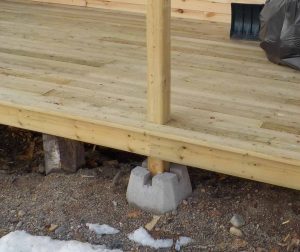
This used to be a far more common issue, but thankfully a combination of education, enforcement and pro-active plans reviews by our inspectors has helped curb the use of 4x4 posts (most often found in deck construction.) Unfortunately, some people still haven’t got the message: when building decks, porches, verandas and the like, Canadian Codes require that 6x6 columns be used. A 4x4 post is ok for a fence, not for a deck: don’t use them.
#4: Improperly constructed beams
If you’re building a beam, the best thing to do is splice it over a post or support. If you’re going to splice it somewhere mid-span, you have to do so within ¼ the distance between the supports, and only near interior supports. There are some other requirements (as outlined here). The number of improperly spliced beams is driven significantly by DIY builders making errors when framing attached decks.
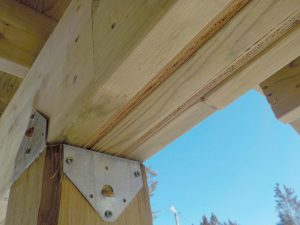
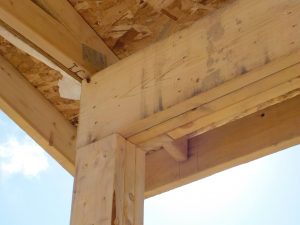

#3: Insufficient nails between trusses/rafters and top plates
We were somewhat surprised this fell into No. 3 on our list, because it’s been a point of enforcement for years. The basic rule of truss installation is that each truss has to be nailed with three nails of at least 3 ¼” length. (In Monty Python-esque terms, three are the number of nails there must be. Two nails are not permitted, and one nail is right out. Unlike Monty Python, four nails are perfectly fine, and hurricane ties - suitably nailed of course - are just peachy.) One of the misconceptions we’ve encountered is that if exterior sheathing laps from an exterior wall onto the drop chord element of a drop chord or raised heel truss, that it’s OK to reduce the number of nails between the truss and the top plate: not so. Some of these occurrences were nothing more than an oversight, where someone forgot to hammer in a third nail on one truss connection of dozens, but sadly, the majority of infractions were simply contractors or homeowners doing things wrong from the get-go.
#2: Improper window installation
Despite the fact that it’s a point of enforcement for years, our inspectors continue to find incorrectly installed windows: either flashing pans are not installed or installed incorrectly, or the windows are improperly flashed/sealed. This is of considerable concern: The No. 1 cause for claims under the Atlantic Home Warranty program is due to leaks in, on, around and under improperly installed windows. Correct window installation isn’t complicated or expensive, but incorrect installation can lead to incredibly costly repairs. If you have any doubts about how to install a window correctly, see our info guide here, or download a .pdf flashing outline. We cannot state this forcefully enough: if we find an improperly installed window, we will require corrections – and if this means removing a window when siding has already been installed, so be it (and yes, we’ve ordered this: it doesn’t make us a lot of friends, but it saves homeowners the headache of expensive repairs.) Here's a simple rule to at least guide installers in the right direction: Do. Not. Use. Sheathing. Tape.
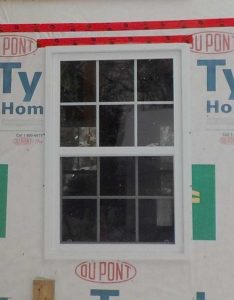
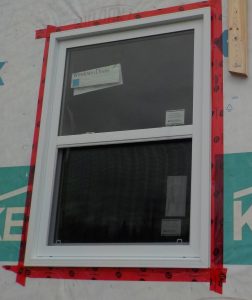

(dis)honourable mentions:
- Improper/missing balusters in a guard: Oh, those horizontal wire ship-look guards are sharp looking things, aren’t they? This design was allowed in 2021 due to the introduction of NBC 2015, which relaxed rules in the 2010 Code. The problem: these horizontal-wire guards must still prevent the passage of a 10 cm sphere, and in almost every case we saw in 2021, the wires could be easily moved vertically to spacing often double the 10 cm limit. For this reason, we strongly (strongly) recommend not using these systems, unless the wires are strung at spacings closer than is common, to avoid these sorts of issues.
- Improperly nailed lintels: Lintels (headers) must be nailed with two nails at distances no greater than 18”. Filler pieces are allowed at spacing no greater than 18”. We found an interesting trend in 2021, where contractors were spacing two-ply lintel elements to the outside edges of 2x6 construction, with foam or fibreglass stuffed in the gap – but no material connecting the two lintels. This will be a point of enforcement for 2021.
- Insufficient attic insulation: We found a number of situations where contractors or homeowners had not placed the required R50 of insulation in an attic. We’re not sure why: this has been a longstanding requirement.
And now, the most common infraction of 2021:
#1 Wood screws used instead of nails

For some reason, a lot of people – and that includes DIY builders and contractors alike – will assemble structural elements with ordinary Robertson-head deck screws. Simply put, this is not permitted (here’s why). All structural, load-bearing connections must be either nailed or attached with specialized engineered screws. (Engineered screws are usually quite expensive, and feature either a hex head or a Torx head.) Wood screws (also known as deck screws) are not permitted to be used in hurricane ties or for joist hangers, either: it’s such a common error that if taken alone, improperly installed hurricane clips and joist hangers would have ranked as the No. 3 on this list. Sadly, despite consistent education and enforcement, we continue to find abundant examples of screws used instead of nails. As one of our inspectors says regarding the Code's table on how to achieve compliant structural connections, "It's called a nailing table for a reason."
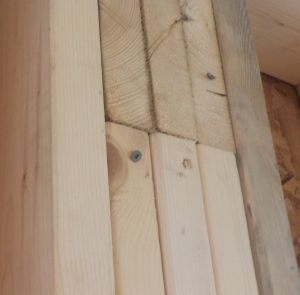
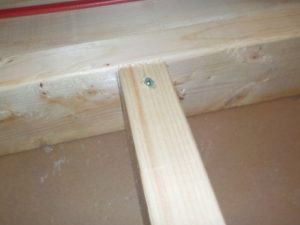

To summarize, screws tend make our inspectors unhappy. Nobody likes unhappy inspectors: use nails.
